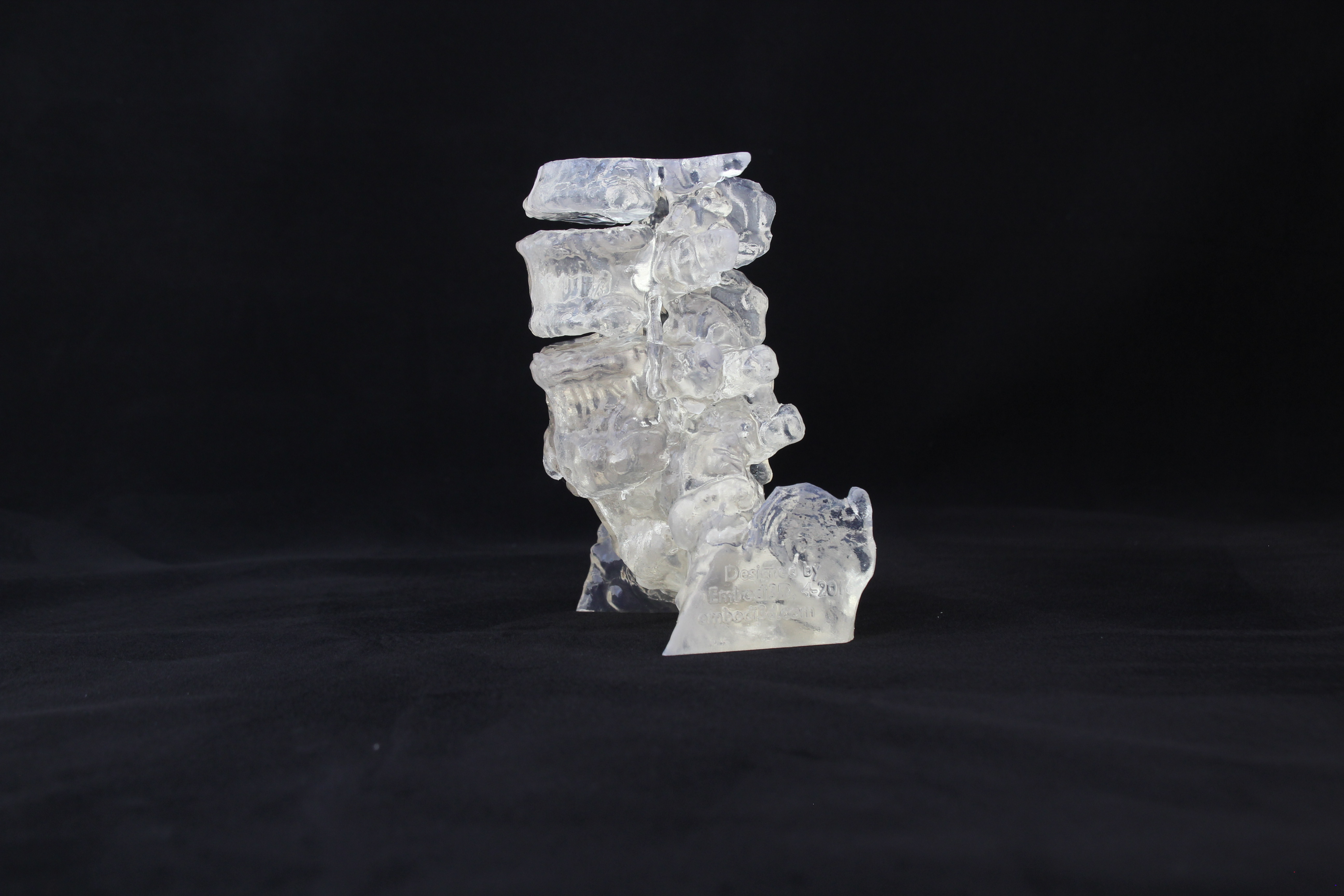The first of its kind, embodi3D is an online community that specializes in exploring the exciting space where 3D printing intersects with healthcare.
Founded by Dr. Michael Itagaki, an eminent interventional radiologist based in Seattle, the group brings together professionals in medicine, biological science and other related fields, who are interested in discussing, teaching or learning about biomedical 3D printing.
Megan Hanna from 3DPI got in touch with Dr. Michael Itagaki, in order to learn more of the process behind embodi3D’s creation, and to solicit his opinion over where he thinks biomedical 3D printing is heading.
Megan Hanna: How would you describe Embodi3D?
Dr Michael Itagaki: Embodi3D is the biomedical 3D printing community. It is a community of individuals, mostly professionals in medicine, biological sciences, and related fields, who are working together to improve their individual fields through 3D printing. It is the first and largest such community on the Internet.
Megan Hanna: How and why did you start embodi3D?
Dr Michael Itagaki: I started embodi3D after a personal experience with a patient. I am an interventional radiologist, which is a kind of minimally invasive surgeon.
My patient had a condition where an artery near her spleen could burst at any time and kill her. Conventional medical knowledge said the only way to save her was to either cut out the artery and her spleen along with it, or plug up the artery and cause the spleen to die from lack of blood flow.
In both cases she would be left without a functioning spleen, which would weaken her immune system for life and make her more prone to infections. Several other doctors told me there was no way to save her spleen. She asked me to think outside the box to find another way.
I knew that procedures and specialized equipment had been developed to treat similar artery problems in the brain. I did not know whether the equipment designed for the brain would work in the artery in the abdomen near her spleen.
I had an idea that maybe I could 3D print a replica of the artery and test out the equipment beforehand to make sure it was safe and worked in the abdomen. I had been tinkering with potential medical applications of 3D printing for about a year at this point.
The problem was that nobody had ever 3D printed a hollow artery like this before. I struggled for weeks and spent hundreds of hours figuring out how to make a small vascular artery model from a CT scan. There was nobody I could ask for help because I was the first to ever try this.
I was successful in creating a 3D printed vessel model, and practiced the surgery in model beforehand to get all the kinks with the equipment worked out. When I actually performed the surgery for her, the equipment performed exactly as it had in practice and the procedure was a big success. Her abnormal arteries were treated and her spleen was saved.
After this procedure I thought about how big an impact the 3D printed model had on this patient and how difficult it had been for me to make it with no guidance and nobody to ask for help.
So I started embodi3d to be a venue where professionals could help each other, exchange ideas and knowledge, and work together to improve our individual biomedical fields through 3D printing. I want the next generation to have a much easier time learning medical 3D printing than I did.
Megan Hanna: How does embodi3D work and who is involved?
Dr Michael Itagaki: At its core, embodi3D provides free resources to biomedical professionals to help them get up and running with 3D printing. The emphasis is on ‘free’. There are free tutorials on how to use free and open-source software to do medical 3D printing. Many people interested in medical 3D printing are told that their only option is to buy expensive proprietary software that costs up to $15,000 per year to license.
This is a huge barrier that prevents thousands of people from using 3D printing to help their patients and research. The dirty secret is that with a few tips and tricks, free open-source software can be used to make 3D printed medical models.
There are a variety of free tutorials that teach people exactly how to create 3D printed models from medical scans using freeware. We also have an extensive library of free high quality 3D printable anatomic files that can be downloaded and 3D printed for educational and research purposes. Active discussion forums are a place where people can ask questions and get answers to their 3D printing problems. Our most knowledgeable members routinely write blog articles to share their knowledge with the community. Most of our members are professionals in medical or scientific fields, but the website is open to all.
Megan Hanna: What do you see for the near and far future for 3D printing, particularly in relation to the healthcare industry?
Dr Michael Itagaki: 3D printing is poised to have a huge impact in 3 main areas; firstly in surgical planning, then medical training, and finally medical device development.
In a complex surgery, a good surgeon can look at a stack of images from a medical scan and imagine what the anatomy looks like in three dimensions. The problem is it is very difficult to do this. Radiologists spend 5 years after medical school training to look at image slices and understanding how that translates into 3D. With 3D printing, imagination is not necessary as a physical replica can be printed, handled and examined. Our human brains were designed to intuitively understand a hand-held object and were not designed to understand stacks of image slices. 3D printed models thus give the surgeon a much more intuitive understanding of the patient’s anatomy. This reduces surgical time and improves surgical outcomes. Ongoing research is underway to examine this in more detail.
For medical training, traditionally students and residents learned on cadavers, animals, or on real patients under supervision of a senior doctor. All of these options have risks and obvious shortcomings. 3D printed anatomical replicas allow medical trainees to learn in a low cost, risk-free environment. This makes medical training more effective.
Finally, medical devices are typically tested in animals or in humans in the context of a clinical trial. Testing on animals is safe for humans, but is not realistic as animal arteries, veins, and organs are of different sizes, orientations, and positions relative to a human. Just because a device works in a pig doesn’t mean it will work in a person. Also, it is important to treat animal subjects humanely, which can add expense and difficulty to the testing. Testing medical devices in humans is the most accurate method but is obviously risky as a real person could be injured should the device not work as planned. Using 3D printed replicas offers another alternative. The anatomy is realistic because it is from a real human scan, but a real person’s health and well-being aren’t at stake should the device fail. Testing devices in 3D printed models can be safer, more accurate, and cheaper than testing in animals or humans, and can reduce the need to conduct animal or human device testing.
Megan Hanna: What most excites you about 3D printing, and the possibilities it creates?
Dr Michael Itagaki: 3D printing is a revolutionary technological advance, and like other revolutionary technologies that came before it, I think there is no predicting the incredible advances that are to come, and there is no field or industry that will be untouched by it. Consider the computer revolution in the late 1970’s, or the Internet revolution of the early 1990’s, or the mobile revolution that started about 10 years ago. In their infancy, could anyone have predicted how these technologies would change the world? I think 3D printing is the same way, and that is what excites me the most.
Megan Hanna: What challenges are there? Are there any limitations to 3D printing?
Dr Michael Itagaki: Right now medical 3D printing is still in its infancy and there are many problems to be sorted out. Limitations in 3D printable materials is a major factor. This problem is correcting itself rapidly as a great diversity of new 3D printable materials are constantly becoming available. For medical use however, there needs to be advancement on materials that can be sterilized for use in the operating room, or even implanted.
Easy to use and inexpensive software is another major issue. Commercial medical software is very expensive and difficult to use. Free and open-source software can be used to make medical 3D prints but can be confusing without guidance. To help alleviate this problem, embodi3d has published a variety of easy to use tutorials to help people start medical 3D printing on their own.
Another major challenge is the cost and build volume of 3D printers. In general, printers that can produce large objects, such as those that replicate human anatomy, have a large build volume, and can be very expensive. Hardware costs will inevitably come down and build volumes will go up, but it may take several years before it is possible to routinely print body sized parts on a low cost printer.
Megan Hanna: And finally, apart from running embodi3D, are you working on a specific case or anything else at the moment in relation to 3D printing and healthcare?
Dr Michael Itagaki: I was recently contacted by another physician who has been unable to stand for more than 30 minutes due to excruciating low back pain. He performs complex procedures on the heart and must stand for most of the day, so obviously he cannot work with this condition. He had surgery on his back but afterward his pain did not improve. He sent me his CT scan and it turns out he has a rare congenital bone abnormality which predisposes him to having severe pinching of his low back nerves. This can be seen on the CT scan but it takes a highly trained eye to see this in the stack of imaging slices that make up most medical scans.
I 3D printed a replica of his low back spine, the lumbar spine. The replica shows exactly how the abnormal bones are pinching the nerves. When you hold the physical model the abnormal pinching is really obvious. With this model in hand he will be able to have a more meaningful discussion with his spine surgeon about how they can operate to relieve his back pain. I just sent the model to him a few days ago so I don’t yet know how the story will end, but with the help of this 3D printed model I hope to, literally, get this good doctor back on his feet.
I am also organizing a series of training workshops on the use of open-source software for medical 3D printing for the 2016 Radiological Society of North America meeting. This is the major global meeting for radiologists, the doctors to do medical imaging. I gave a workshop on the topic at last year’s meeting and this year the workshops are expanding to 4, which I think will involve training 600 physicians. There is clearly a great deal of demand among physicians who want to learn about medical 3D printing!




